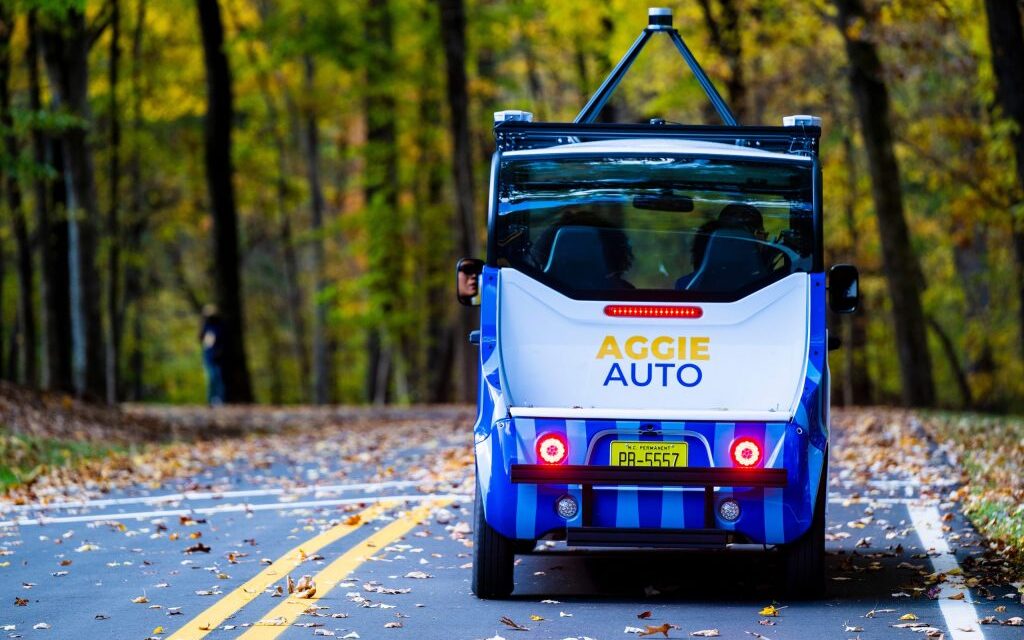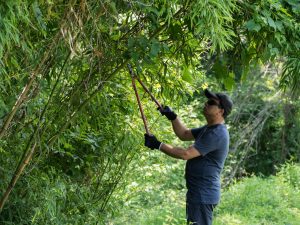By Megan Sayles
AFRO Business Writer
msayles@afro.com

Photo Courtesy of North Carolina Agricultural and Technical State University
North Carolina Agricultural and Technical State University (North Carolina A&T ), the largest historically Black college in the country, is in the process of bringing self-driving shuttles to the Greensboro, N.C. community. The university unveiled three autonomous vehicles, known as Aggie Auto shuttles, in November 2022 before testing them in a one-month pilot program that took place in September 2023.
With the shuttles, North Carolina A&T hopes to provide transportation access to disconnected communities in the Greensboro and surrounding areas, a number of which are rural areas.
“We’ve been conducting a survey to all riders who are using our service about their perception and trust in these vehicles. Imagine in the future, the city invests a lot in this domain and then people are still not trusting,” said Karimoddini. “What is the trust of the public in these vehicles and how can we build that trust are the questions we are looking at.”

“There are a lot of open questions that we can address with public transportation in rural areas, which are a signature of our state of North Carolina,” said Ali Karimoddini, associate professor at North Carolina A&T’s electrical and computer engineering department. “We decided to move on with creating infrastructure for testing autonomous vehicles in rural areas, and we’re developing different autonomous cars that can serve underserved and rural communities.”
Ali Karimoddini is an associate professor for North Carolina Agricultural and Technical State University’s electrical and computer engineering department. He has helped to lead the university’s work on the Aggie Auto Shuttles.
The Aggie Auto shuttles were designed by a collaborative of researchers, faculty and students across various science, technology, engineering and mathematics (STEM) disciplines. Before the pilot program’s start, they were tested at Gateway Research Park’s 2-mile test track, which simulates real-world, rural driving conditions.
The pilot’s fleet consisted of three self-driving vehicles, a high-speed van and two sedans, that shuttled students, faculty, staff and community members from campus to downtown Greensboro.
The shuttles are equipped with safety mechanisms for emergency stops and have a human back-up driver who can take over if necessary. They were also designed in compliance with Federal Motor Vehicle Safety Standards.
“These autonomous vehicles could be very efficient—cost-wise, time-wise and human resource-wise— when you have very little service demands distributed across a large community.”
However, Karimoddini said perceived safety concerns did pose a challenge to community members embracing the shuttles.
Karimoddini said the research team intends to release the survey’s findings in the spring. For him, autonomous vehicles hold the key to circumventing the low population density and low ridership in rural communities that cause traditional transit to run infrequently.
“The nature of the distributed population in our rural communities and the sparse demand for transportation services may not justify the use of current transportation,” said Karimoddini. “These autonomous vehicles could be very efficient—cost-wise, time-wise and human resource-wise— when you have very little service demands distributed across a large community. We can’t just ignore their transportation needs.”
Dezmon Estep, senior computer engineering student at North Carolina A&T, was a part of the team of researchers behind the Aggie Auto shuttles. He decided to join the project because of his affinity for mobile autonomous systems.
“Before, it was really stressful because you have to make sure everything is working properly and precise. Once I actually got to the event, we did the first shuttle ride, and everything worked smoothly,” said Estep. “You could see the wow and amazement of everybody there getting on the shuttle. It was pure bliss to me because I was a part of something so cool.”
Estep said the test run went well. As for improvements, he wants the team to develop an app, similar to Uber or Lyft, that would enable individuals to view estimated wait times and the shuttle’s list of stops.
Estep thinks the autonomous shuttles have an opportunity to reduce the constraints that traditional shuttle services are confined to. If he had to describe their strength in one word, he said it would be their versatility.
“There’s not as many restrictions once you solidify the platform because you won’t have time restrictions, like shuttles only operating at certain hours, and it won’t be that it can only go to certain spots,” said Estep. “I think once the platform is fully developed, you’ll be able to get on the shuttle at any time. You’ll also be able to go to a wider variety of locations. It’s also just a really cool experience.”
Megan Sayles is a Report For America corps member.
The post Historically Black college brings autonomous vehicles to Greensboro, N.C. appeared first on AFRO American Newspapers.










